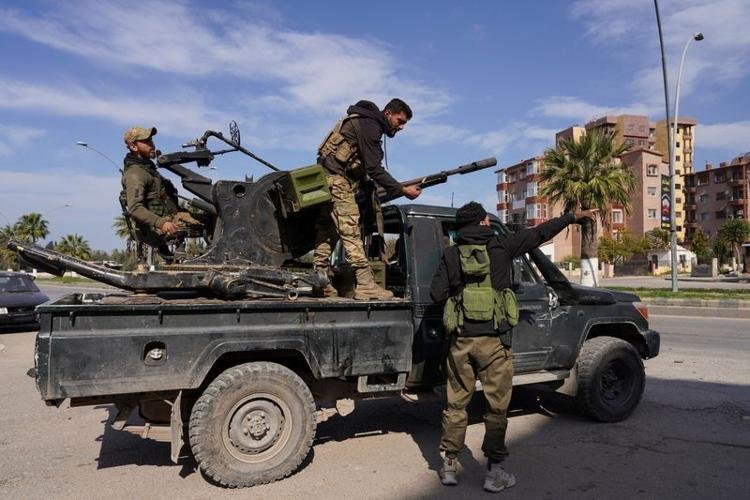Syrian Crackdown
More than 1,000 people have been killed in just two days of intense clashes between gunmen linked to Syria’s new Islamist rulers and fighters from Bashar al-Assad’s Alawite sect in the country’s coastal region, a war monitor reported on Saturday. The violence has resulted in a significant death toll, marking one of the deadliest episodes in Syria’s ongoing 13-year civil conflict.
According to the Syrian Observatory for Human Rights, the casualties include 745 civilians, 125 members of Syria’s security forces, and 148 fighters loyal to the former Assad regime. The observatory’s head, Rami Abdulrahman, described the situation as one of the worst outbreaks of violence in years, with entire communities affected. He highlighted that among the victims were women and children from the Alawite minority, a group that had long been associated with the rule of Bashar al-Assad and his predecessors.
The new ruling authority launched a military operation on Thursday, claiming it was targeting a nascent insurgency following deadly ambushes carried out by militants linked to Assad’s former government. Syrian security officials confirmed that dozens of security forces personnel had been killed in the intense fighting.
Government officials have admitted that violations occurred during the crackdown but attributed them to unorganized civilians and rogue fighters who took advantage of the chaos to engage in violence. In response, the defense ministry announced on Saturday that all roads leading to Syria’s coastal region had been sealed off to prevent further instability and facilitate the restoration of order. Security forces have been heavily deployed in major coastal cities to maintain control.
A defense ministry source also stated that an emergency committee had been formed to investigate human rights violations during the operation. Any individual found guilty of disobeying military orders would be referred to a military court for prosecution.
Reports emerging from the affected areas paint a grim picture of violence, including execution-style killings of dozens of Alawite men in one village. The scale of these events has raised serious concerns about the ability of Syria’s Islamist rulers to govern in an inclusive manner. Western and Arab governments have repeatedly stressed the importance of avoiding sectarian retaliation in the post-Assad era.
Former President Bashar al-Assad was overthrown last December, ending decades of dynastic rule by his family, which had been marked by widespread repression and civil war. Since his removal, Syria has been struggling to establish a stable political structure amid ongoing violence and sectarian tensions.
In a televised address on Friday, Syria’s interim president, Ahmed Sharaa, defended the crackdown but urged security forces to exercise restraint. “Security forces should not allow anyone to exaggerate in their response because what differentiates us from our enemy is our commitment to our values,” he stated. He also warned against mistreating civilians and captives, emphasizing that Syria’s new leadership must uphold moral principles even during conflict.
Meanwhile, social media platforms, particularly Syrian Facebook accounts, have been flooded with images and obituaries of victims from the coastal region, with families mourning their loved ones. Abdulrahman, a longtime critic of Assad’s rule who has documented war crimes for over a decade, described the recent violence as a series of sectarian massacres aimed at expelling Alawite residents from their homes.
Authorities insist they are working to restore calm and prevent further civilian harm. However, fear has already gripped the population. Thousands of Alawites and Christians have reportedly fled their homes since the clashes began on Thursday, fearing targeted attacks. Hundreds, primarily women, children, and elderly individuals, have sought refuge at the Russian military base in Hmeimim, Latakia, according to eyewitness reports and video footage.
Despite government claims of restoring order, reports suggest that killings, looting, and the burning of homes continued overnight in Baniyas and its surrounding villages. Local residents, speaking anonymously, confirmed that the violence had not subsided.
Reuters has not been able to independently verify these reports, but the situation remains critical as international observers closely monitor developments in Syria’s increasingly volatile coastal region.










